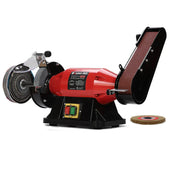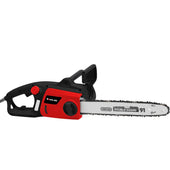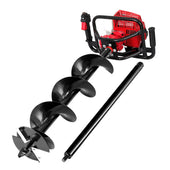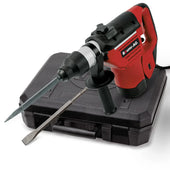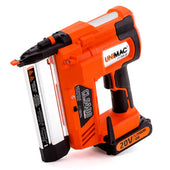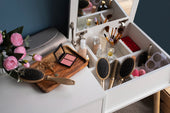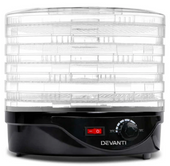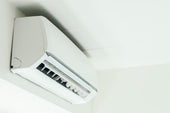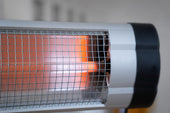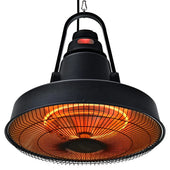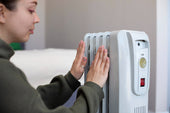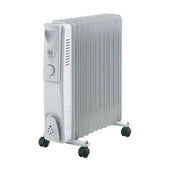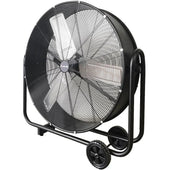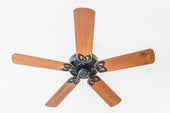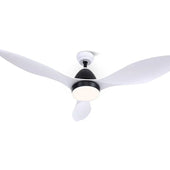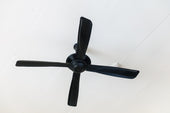Introduction: Why Proper Assembly of Kitchen & Dining Chairs Matters
Proper assembly of kitchen and dining chairs is essential for ensuring safety, comfort, and durability. Chairs that are not properly assembled can become unstable, increasing the risk of accidents or injury during use. Furthermore, incorrect assembly may lead to uneven wear, compromising the structure and shortening the lifespan of the chair.
A well-assembled chair enhances the aesthetics of the dining space, contributing to an inviting atmosphere for gatherings or meals. Assembly errors can also invalidate product warranties, leaving users unprotected against defects. Understanding the importance of correct assembly, as emphasised by During Days, sets the foundation for creating a functional and visually appealing dining area.
Essential Tools and Equipment You'll Need
To assemble kitchen and dining chairs effectively, it is crucial to have the appropriate tools and equipment on hand:
- Screwdriver Set: Both flathead and Phillips screwdrivers are typically required for tightening screws and bolts.
- Allen Keys: Often provided with the chairs, these are commonly needed for securing specific fasteners.
- Rubber Mallet: Useful for gentle taps to fit components without damaging the finish.
- Measuring Tape: Ensures accuracy when aligning parts or verifying assembled dimensions.
- Level: Checks balance and stability.
- Battery-Powered Drill: Speeds up the process for assembling chairs with multiple screw points.
- Soft Cloth: Prevents scratches when working on delicate surfaces.
Having these items ready ensures smooth and efficient assembly.
Unboxing and Organising Chair Components
Upon receiving the chair package, one should start by carefully unboxing it. Scissors or a utility knife can be used to cut through the tape, but caution is advised to avoid damaging the contents. The components should be laid out on a clean flat surface, such as a table or floor, for easy visibility.
Ensure all parts are present by cross-referencing the included assembly manual or parts list. Common components may include:
- Chair legs
- Seat base
- Backrest
- Screws, bolts, and nuts
- Allen keys or other tools
Place small screws and fittings in a secure, easily accessible spot to prevent loss. Organising ensures smoother assembly steps ahead.
Understanding the Assembly Manual and Instructions
The assembly manual serves as a detailed guide to ensure the proper construction of kitchen and dining chairs. Before starting, users should carefully examine each page of the instructions to identify all listed components and tools required. Diagrams and pictorial representations often accompany step-by-step directives, making the process more comprehensible.
Key sections of the manual usually outline:
- Parts List: A breakdown of all chair components, including bolts, screws, and washers.
- Tools Required: Specifications of tools such as Allen keys, screwdrivers, or hammers.
- Assembly Steps: Sequential guidelines detailing each stage of the assembly process.
By adhering to the manual, users can avoid errors that lead to instability or improper alignment of parts.
Preparing a Workspace for Easy Assembly
Creating an organised and efficient workspace ensures smoother assembly. First, select a flat, stable surface such as a dining table or workbench, ideally in a well-lit area to improve visibility. Place a protective covering, such as a drop cloth or cardboard, to prevent scratches or damage to the chair components or the surface. Gather necessary tools, including screwdrivers, an Allen key, and any hardware provided in the chair’s packaging. Separate and organise the chair components by type for easier access. Clear away clutter to allow sufficient space to manoeuvre pieces during assembly, reducing the risk of misplacing parts or tools.
Step-by-Step Guide to Assembling the Chair Frame
To start assembling the chair frame, ensure all necessary components and tools are ready.
Tools Needed
- Allen keys or screwdriver (depending on the hardware provided).
- Screws and washers included in the chair kit.
- Rubber mallet (optional for adjustments).
Steps to Assemble
- Organise Materials: Lay out all frame parts and confirm the quantity of screws and washers matches the instruction manual.
- Attach Front & Back Legs: Bolt or screw in the rear legs to the chair’s seat base, ensuring they fit flush. Then secure the front legs.
- Connect Crossbeams: Align crossbeams with marked slots, ensuring proper positioning for stability.
- Tighten Screws: Firmly insert screws for each leg and crossbeam, avoiding over-tightening to prevent damage.
- Check for Stability: Once assembled, press gently on the frame to confirm balance and sturdiness.
Attaching the Seat and Backrest Securely
- Align the Seat and Frame Position the chair frame upright on a flat surface. Place the seat on the frame, ensuring the pre-drilled holes on the underside of the seat align with the corresponding holes or brackets on the frame.
- Secure the Seat Insert the screws or bolts provided into the aligned holes. Use a screwdriver or hex key, depending on the hardware type, to tighten each fastener. Avoid overtightening, as it might crack the wood or strip the screws.
- Attach the Backrest Position the backrest against the frame at the designated attachment points. Align the holes on the backrest with the frame’s holes.
- Fasten the Backrest Use the provided screws, bolts, or brackets to secure the backrest to the frame. Tighten each fastener evenly to stabilise the structure.
Ensuring Stability: Tightening Screws and Fittings
Properly securing screws and fittings is essential for ensuring chair stability and safety. Begin by aligning all components as indicated in the assembly instructions. Insert screws gradually, avoiding fully tightening any single screw at the outset. This approach allows for adjustments if parts are slightly misaligned. Once all screws are in place, use the appropriate tools—typically a screwdriver or Allen key provided in the kit—to tighten them evenly.
Pay close attention to critical joints such as where the legs meet the seat. Tighten screws firmly, but avoid over-tightening, which may strip the threads or crack wooden parts. Recheck all screws after finishing assembly to confirm they are secure.
Adding Optional Features: Cushions, Decor, or Covers
Enhancing kitchen and dining chairs with optional features can elevate comfort, visual appeal, and protection. Cushions are a popular addition; they provide added support and softness during seating. Choose cushions with firm padding and durable fabric, ensuring they complement the chair's design. Covers, on the other hand, offer practical benefits, protecting the chair from spills, stains, and wear. Opt for washable materials with a snug fit for convenience and neat aesthetics. For decor, consider accents such as chair sashes, bows, or seasonal embellishments. Coordinate colours and textures to maintain a cohesive dining room theme.
Tips for Adjustments and Ensuring Comfort
- Tighten Screws and Bolts Gradually: When assembling, screws and bolts should be tightened evenly and gradually. Over-tightening one side too quickly can cause imbalance or damage.
- Level the Chair: Place the chair on a flat surface to ensure all legs touch the ground evenly. Adjust and tighten as needed to prevent wobbling.
- Test Cushion and Seat Alignment: Verify that cushions, if provided, are securely attached and the seat is aligned symmetrically. Misalignment can lead to discomfort.
- Check Backrest Angle: For chairs with adjustable backrests, test different angles to find a position that supports posture effectively.
- Add Protective Pads: Attach felt or rubber pads to the bottom of the legs to prevent scratching floors while also improving stability.
- Verify Comfort After Assembly: Sit on the chair to ensure the height, support, and overall comfort meet expectations before considering it complete.
Common Assembly Mistakes to Avoid
- Over-tightening Screws: Over-tightening can strip screw threads or damage the chair frame. Tighten screws until snug, then stop to prevent material stress.
- Ignoring the Instruction Manual: Skipping steps or misinterpreting instructions leads to misaligned parts; always review the manual carefully.
- Using the Wrong Tools: Incorrect tools may damage components or make assembly harder. Verify the tool list and prepare accordingly.
- Mixing Up Parts: Small components like washers or bolts can easily be confused. Separate and label all parts before beginning.
- Skipping Preassembly Checks: Failing to inspect parts for defects, like cracks or scratches, may cause assembly issues later.
- Rushing During Assembly: Hurrying can lead to mistakes or uneven assembly. Work patiently and methodically for good results.
Inspecting the Final Product for Safety and Quality
Once the assembly is complete, it is essential to conduct a thorough inspection. Begin by checking all screws, bolts, and fastenings to ensure they are properly tightened, and no components are loose. Assess the balance of the chair by placing it on a flat surface to confirm it stands evenly without wobbling.
Evaluate the sturdiness by gently applying pressure to various parts of the frame, such as the backrest and legs. Inspect the materials for any cracks, scratches, or wear that could compromise functionality or aesthetics. Additionally, verify that all cushions or fabric coverings are securely attached and free of tears.
Routine Maintenance Tips for Your Assembled Chairs
Proper care can extend the lifespan of kitchen and dining chairs while maintaining their appearance and functionality. Regular attention ensures they remain sturdy and presentable for years to come.
- Tighten Screws and Bolts: Check all screws, bolts, and joints every few months to ensure they remain secure. Loose fittings can compromise stability.
- Wipe Surfaces Gently: Use a damp, soft cloth to clean seats, backs, and legs. Avoid abrasive cleaners to protect finishes.
- Inspect for Damage: Examine for cracks, splits, or signs of wear. Address minor repairs promptly to prevent further deterioration.
- Protect Floor Contact Points: Attach felt pads to chair legs to avoid scratches on flooring and reduce noise when chairs are moved.
- Recondition Wood and Upholstery: For wood chairs, apply furniture polish as needed. Upholstered parts should be vacuumed and spot-cleaned regularly.
Frequently Asked Questions on Chair Assembly
- What tools are needed for chair assembly? A standard assembly typically requires a screwdriver, an Allen wrench (often included), and possibly a rubber mallet. Some designs might also need a drill for added secure fastening.
- How long does it take to assemble a chair? Assembly time depends on the complexity of the chair. On average, simple designs take around 15–30 minutes, whereas more intricate models might require up to an hour.
- Can one person assemble a chair alone? Yes, most kitchen and dining chairs are designed for single-person assembly. Assistance may be needed when aligning heavy or awkward parts.
- What if screws or parts are missing? Contact the chair's manufacturer or retailer for replacement parts. Providing your purchase details and part descriptions speeds up the process.
- Are instructions always included? Most chairs come with detailed instructions. If missing, check the manufacturer’s website for digital PDF guides or contact their support team for assistance.
Conclusion: Enjoying Your Perfectly Built Chairs
Once the assembly is complete, the newly constructed chairs can truly transform a dining or kitchen space. Each well-fitted part reflects the care and effort invested in the process. The chairs not only serve a functional purpose but also contribute to the aesthetic appeal of the room. Ensuring proper assembly enhances both durability and comfort for everyday use. Attention to detail during the process ensures safety and stability over time. Properly built chairs provide a sense of accomplishment and add personal value to the space. These functional pieces are now ready to provide lasting enjoyment for family and guests.






















































